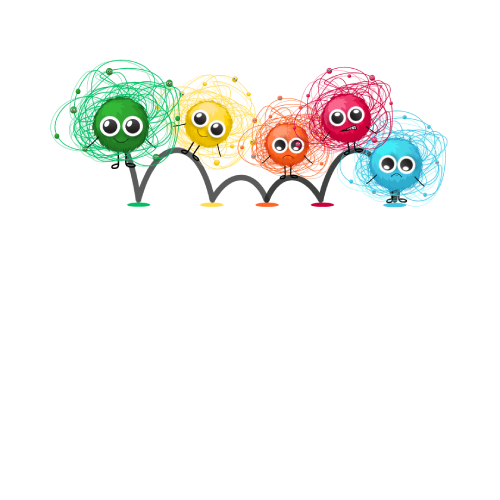Exploring the Power of Bilateral Artwork
Creative therapies have gained increasing recognition for their ability to support emotional well-being, particularly for individuals who struggle with traditional talk-based approaches. Among these innovative therapies, bilateral artwork has emerged as a promising tool for helping people manage emotional dysregulation. This technique, which involves engaging both sides of the brain through creative expression, offers a unique way to process and release overwhelming emotions. But what exactly is bilateral artwork, and how does it work?
What Is Bilateral Artwork?
Bilateral artwork is a therapeutic technique that encourages the use of both hands to create art. By engaging both the left and right hemispheres of the brain simultaneously, this method promotes balance and integration within the nervous system. The left hemisphere, typically associated with logical thinking and language, works in tandem with the right hemisphere, which is more connected to creativity, emotions, and spatial awareness. This dual engagement can lead to a form of art that not only reflects the creator’s inner state but also helps in regulating it .
The technique can take many forms, from drawing or painting with both hands to using alternating movements while engaging in creative activities. The key is the rhythmic, bilateral stimulation that occurs during the process, which is thought to mimic the brain’s natural mechanisms for processing and integrating emotional experiences .
The Science Behind Bilateral Artwork
Research into the effectiveness of bilateral artwork is still in its early stages, but existing studies and clinical observations are promising. The concept of bilateral stimulation originates from Eye Movement Desensitization and Reprocessing (EMDR), a well-established therapy for trauma and anxiety. EMDR uses bilateral stimulation- typically through eye movements – to help individuals process traumatic memories and reduce the intensity of emotional responses .
Similarly, bilateral artwork applies this concept in a creative context, aiming to achieve similar outcomes. The bilateral stimulation provided by using both hands during the creative process is believed to help “unstick” the brain’s processing of emotions, particularly those associated with trauma or dysregulation. This allows the individual to reprocess these emotions in a way that leads to resolution and regulation .
Studies have shown that engaging in bilateral activities can reduce symptoms of anxiety, depression, and post-traumatic stress disorder (PTSD). The rhythmic, bilateral movements help to calm the nervous system, creating a sense of safety and stability. For individuals with emotional dysregulation, this can be a powerful tool in regaining control over their emotional responses .
Practical Applications of Bilateral Artwork
Bilateral artwork is versatile and can be adapted to suit a variety of therapeutic settings. It can be used with children, adolescents, and adults, and can be integrated into individual or group therapy sessions. The process is simple and accessible, requiring only basic art supplies and a willingness to engage in the creative process .
For children or young people who struggle to articulate their emotions verbally, bilateral artwork offers a non-threatening way to express what they’re feeling. The act of creating with both hands can be particularly grounding, helping to soothe the nervous system and create a sense of inner calm. Over time, this practice can lead to greater emotional awareness and resilience .
Facilitators may incorporate bilateral artwork into sessions as a standalone activity or in conjunction with other therapeutic modalities.
Case Studies and Testimonials
While formal research on bilateral artwork is still developing, anecdotal evidence from therapists and clients suggests that it can be a highly effective tool for emotional regulation. Clients often report feeling more relaxed, centered, and in control of their emotions after engaging in bilateral artwork. For some, it provides a breakthrough moment where they are able to access and release emotions that were previously inaccessible .
One case study involved a teenager struggling with anxiety and panic attacks. Traditional talk therapy had been challenging for him, as he found it difficult to articulate the overwhelming emotions he was experiencing. However, through bilateral artwork, he was able to express these feelings visually, which led to a significant reduction in his anxiety symptoms over time. The repetitive, bilateral movements helped to calm his nervous system, making it easier for him to engage in other therapeutic activities .
Research
- Van der Kolk, B. A. (2014).The Body Keeps the Score: Brain, Mind, and Body in the Healing of Trauma. New York: Viking. This book includes case studies and discusses various therapeutic interventions, including bilateral stimulation and creative therapies, for trauma and emotional dysregulation.
- Malchiodi, C. A. (2014).Art Therapy and the Brain. In: Handbook of Art Therapy, Second Edition. New York: Guilford Press. This chapter discusses the neurological underpinnings of art therapy, including the use of bilateral activities in emotional healing.
Next Steps
- Become a Member – Subscribe for access to this learning and much more 🔍
- Child/Young Person Sessions – Book a session for a child or young person 🔍
- Parent/Carer Sessions – Book a session for yourself 🔍
- Training – Learn this approach for yourself 🔍
- Courses – Become a PRACTITIONER 🔍






